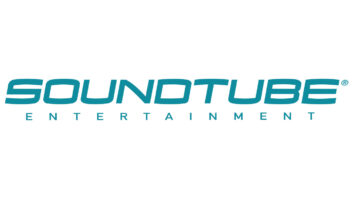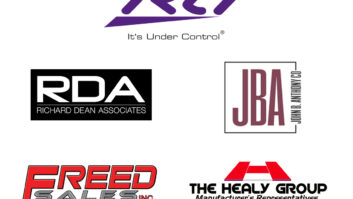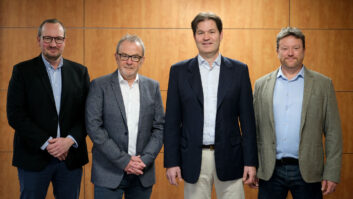Holiday sales forecasts, consumer confusion about HDTV, and what to do about slumping audio sales (see p. 10) were just some of the subjects discussed at the annual Consumer Electronics Association (CEA) Industry Forum, held earlier this month at the La Costa Resort, here.
CEA said more than 500 leading technology executives attended. That includes those from the Home Theater Specialists of America buying group and the Optical Storage Technology Association’s Symposium, which co-located their meetings at La Costa.
Of keen interest at the Forum was discussion of this year’s holiday shopping season and CEA did not disappoint, leading off with the results of its Tenth Annual Holiday Purchase Patterns survey. (See charts on p. 14.)
Sean Wargo, CEA’s industry analysis director, presented the report which shows that nearly 75 percent of all U.S. households say they are likely to purchase at least one consumer electronics product as a gift this holiday season.
While that’s good news, the report also showed that average pricing will likely be 5 percent lower than last year’s holiday season, while unit sales will increase about 4 percent, with total revenue being about 2 percent lower.
Still, according to the survey, 70 percent of consumers expect to spend the same amount or more this year on gifts this holiday season, up from 68 percent in 2002. The average consumer will purchase approximately seven electronics products this holiday season, up from six products in 2002.
DVD players, the fastest selling consumer electronics product in history, topped the list of electronics gift items likely to be purchased this season for the third consecutive year, with 31 percent of consumers likely to make the purchase. Other products on the minds of gift-givers include digital cameras (24 percent), video gaming systems (20 percent), wireless phones (19 percent), portable MP3 players (16 percent), desktop, laptop or notebook PCs (13 percent) and HDTVs (12 percent).
During a panel on HDTV and consumer education, panelists cited that while plenty of consumer confusion is still out there, a CES survey showed that 9 million households plan to buy an HDTV during the next 18 months. Also another 30 million consumers consider themselves likely purchasers within the next three years. Wargo, who made the presentation, said there will be an 8 percent penetration rate of HDTV products in consumers’ homes by year’s end.
The survey, conducted by CEA’s eBrain research operation, also showed that consumers are somewhat confused regarding the products needed to view HDTV. For instance, nearly three-quarters (74 percent) do not know they often need a set-top box to watch HDTV shows and more than three-quarters (78 percent) do not know they need an HDTV-enabled recorder to record them. Plus, more than half (54 percent) are not aware they can not watch all TV shows in high-definition format because many programs are not yet broadcast in HDTV.
Survey results indicate that more than half — 54 percent — of all consumers say the ability to plug their cable line directly into a high-definition TV would make them more likely to buy an HDTV set. Movies top the list of programming that consumers would most like to watch in the high-definition format. Nearly four out of 10, or 38 percent, of consumers say they would be most interested in or excited about HDTV movies. Sports coverage was second with 21 percent, followed by educational or informational programs at 14 percent.
While Gary Shapiro, CEA president/CEO, noted that the survey showed consumers saying they will buy an HDTV in the near future, he acknowledged, “Even with this success and continued optimism, hurdles remain. The survey also revealed a degree of consumer confusion remains regarding the transition, the technology and HDTV reception requirements.”
One of the panelists on the front line with consumers is Bjorn Dybdahl, president of Bjorn’s Audio/Video of San Antonio, Texas, whose one-location operation has taken HDTV consumer education by the horns. Saying “I don’t have a voice for radio or a face for TV, but it works,” Dybdahl screened and outlined his series of radio and TV ads that he hosts on local TV, which attempt to educate consumers about HDTV.
“We call the spots, ‘Answers to questions (you didn’t even know you were supposed to ask)’ and we started the program because consumers are confused about HDTV and all the technology involved,” the retailer noted.
“This is an indictment of manufacturers,” Dybdahl said, because “manufacturers don’t educate consumers worth a darn, and don’t educate our salespeople worth a darn either.” He added, “Manufacturers don’t get excited about promoting [HDTV] unless it has their logo on it. They should promote for the good of the industry.”
Bryan Burns, strategic business planning and development VP for ESPN, said his company’s philosophy with ESPN-HD has been to “embrace retail relationships, which we feel is critical to consumer acceptance.” ESPN-HD debuted on March 30 and has been backed by Philips Consumer Electronics and Best Buy. In the first year of operation the channel will produce 140 hours of original HD programming, which has emphasized “big events” such as the NFL, Major League Baseball and the NBA.
On the issue of HDTV programming John Taylor, public affairs/communications VP for Zenith Electronics, noted that his company has been active supporting ABC telecasts. And he added, “Cable TV is catching up, DirecTV is doing a good job and CBS and UPN are also adding programming, which can only help the transition to HD.”













